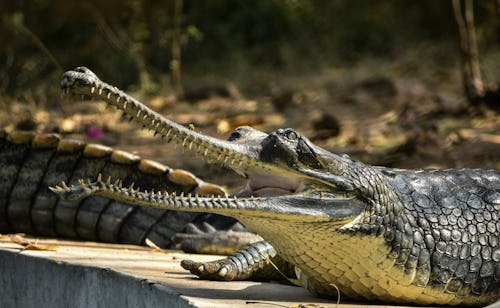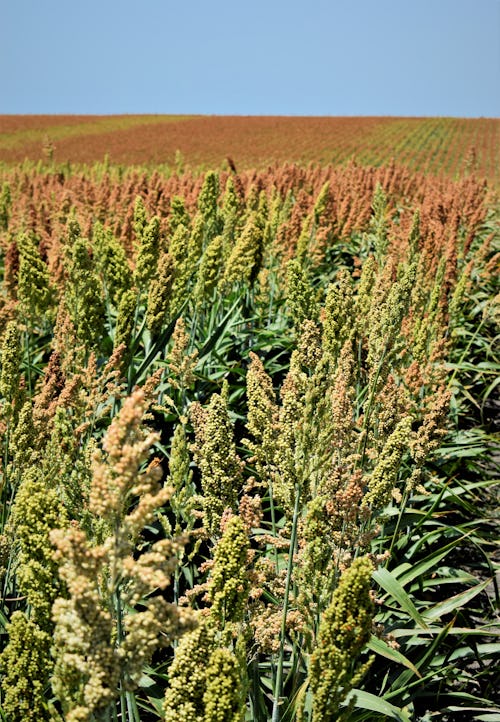
At this point, most people are familiar with climate change, whether they would like to admit that it is happening or not. Extreme weather events — from raging wildfires and excruciating heat waves to sudden floods and freezing winter storms — show us the realities of a warming planet. The climate is changing, and it is going to be bad.
That is, unless you ask the climate change skeptics, who seem to have a permanently "glass is half full" demeanor about the planet warming. Sure, they might recognize that temperatures are rising and we are pumping greenhouse gases into the atmosphere at an unprecedented rate, but they dare to ask the question no one else will: What if that is actually a good thing? The fact that the planet is warming means there are fewer deaths from the cold, argues Fox News goon Greg Gutfeld. And according to the New York Post, carbon dioxide is actually like a fertilizer that is "greening" the planet, resulting in more active plants than ever before. Big oil interest groups have run with this idea, too, touting it as a benefit of burning fossil fuels. Sure, it's melting the ice essential to sustaining life and protecting the planet, while resulting in catastrophic sea level rise, but the planet is literally more green — and that's what we all want, right?
Misguided as it is to think climate change is going to be good at all, this delusional thinking does touch upon something real: Climate change isn't going to be equally bad for all of the planet's occupants. While life might border on unbearable for humans and many other species, there are going to be some creatures that thrive under the harrowing conditions that the Earth's rising temperature will bring.
"There will in fact be 'winners' as well as 'losers' among different species of plants and animals."
"Although the impacts of climate change will overwhelmingly be negative, there will in fact be 'winners' as well as 'losers' among different species of plants and animals," Dr. Bruce Stein, chief scientist at the National Wildlife Federation, tells Mic. So while we know that climate change will be bad for us, just what species will it benefit — and how will their newfound prominence and proliferation affect the rest of the planet?
If you're looking for who is likely to survive, look no further than who has done it before. "The climate has shifted a lot over many millions of years," says Nikhil Advani, director of climate, communities, and wildlife at the World Wildlife Fund. "We can look to see what kinds of species have survived those climatic shifts." Species like crocodiles, sharks, and worms — the species who have managed to remain on this planet no matter what the conditions have been — very well may find ways to survive a climate catastrophe. Expect them to just keep doing their thing while the rest of us panic.
As for other potential survivors, Advani and researchers at the World Wildlife Fund have created an assessment rubric for determining how likely a species is to survive under a changing climate. This focuses on several key areas that factor into survival.
The first is sensitivity to changes in their habitat and surroundings, with qualities like temperature tolerance, water needs, population size, and diets all factoring in. "Species that are highly sensitive to some of those things will be more vulnerable to climate change," Advani says. Elephants, for example, have to drink over 150 liters of fresh water per day simply to survive. As droughts become more common and bodies of fresh water start to dry up, they're a species that will have a harder time persevering.

Next up is exposure, which is the level of changes that a species will actually experience. Polar bears have high exposure because they are dependent on cold, icy territory that is rapidly shrinking. Species that are either occupying areas that have mostly been untouched by climate change, or simply are not reliant on a consistent environment in order to live, will have a better shot at surviving. And sometimes exposure can work in a species's favor — at least in the short term. Stein notes that the Canadian goose has benefited from winters getting warmer. "In many areas of the Northeast and Midwest, formerly migratory populations of geese now are becoming 'residents,' staying year around," he explains.
The last area of emphasis is adaptive capacity. This is the ability to respond to changes in climate either through evolution or by being able to easily move to a new place. Species with shorter generation times, higher reproductive rates, and lots of genetic variation are considered more adaptive. So while, say, mountain gorillas have a low capacity for adapting because they reproduce and evolve slowly over time, butterflies have a better shot at making it, because they have short lives, reproduce quickly, and produce lots of genetic variations that can respond to the conditions around them.
When it comes to plants, Stein says it's the "weedy" species, like dandelions and burdock, which "thrive under a wide range of conditions," that are likely to be the survivors of our climate apocalypse. Plants that spread fast, adapt quickly, and have broad environmental conditions that they can survive in are likely to become a common sight. Basically anything that people spend their summers trying to extract from their yards is going to become a permanent fixture.
Our crops are likely to change, too, as humans shift to food sources that are less sensitive to extreme weather. "Maize, rice, wheat — these these typical cereal crops are being affected by climate change," Advani says, leading some farmers to turn to drought-resistant crops like millet. The transition is not exactly a pleasant one. "I don't know if you've ever tried millet, but it's definitely an acquired taste," Advani explains. "In boarding school in Kenya, we used to get millet porridge for breakfast. It was horrible. None of us liked it." Odds are, that probably won't end up being the tagline for the future millet cereal that we'll all have to start our days with.

In the long run, that shifting flavor palate is going to be the least of our worries. The big concern comes as all these so-called "winners" emerge and the losers dwindle due to climate change. "Plants and animals and microbes that are generalists and are widespread are most likely to thrive under our rapidly changing environmental conditions," explains Fredric Janzen, director of Michigan State University's Kellogg Biological Station. And when those generalists thrive and specialists die out, we end up with a lack of biodiversity.
"My sense is that the proliferation of such generalists, assuming I am correct, will not yield a reduction in densities of plants, animals, or microbes," he explains. "Instead, what we will see is a massive decline in diversity of species." Janzen uses a bird feeder as a handy metaphor: Right now, that feeder might attract 50 individual birds that are of more than 10 different species. Fifty or 100 years from now, that bird feeder should still attract 50 birds — but they may be of only one or two species.
It's not just a matter of not seeing that diversity on display, either. As climate change causes plant and animal species to shift across the landscape, we can expect to see a lot of new interactions, Stein explains, noting that it's hard to know exactly what might come of these mash-ups because this is simply not how our ecosystems operated before. "We are in essence conducting a massive experiment in mixing species and transforming ecosystems," he says, which "may lead to the emergence of new, and possibly deadly, diseases."
"You might actually end up with rats that are human-sized."
There is one kind of species that is likely to be a big winner when it comes to climate change: Pests. "Cockroaches, rats, even raccoons to some extent — these are very adaptable species," Advani explains. "They can thrive in almost any environment, they'll eat almost anything." That may sound admirable, but it is not great for the rest of us. Many pests and invasive species carry disease, and we rely on the natural protection of a bustling ecosystem to protect us against those outbreaks. But as biodiversity plummets and our natural defenders find it harder to survive, pests will adapt, which will likely lead to diseases reaching humans and other species more often and spreading faster.
In fact, Advani notes that some believe these creatures could eventually become the planet's dominant species. "Very long term, if you think humans are going to be gone from this planet at some point," he says, "the world may come to be dominated by a species like rats. You might actually end up with rats that are human-sized." Of course, he notes that future would have to be "many, many millions of years from now."
We can't stop all of this from happening. As the planet warms, ecosystems will be forever altered and we will be dealing with the fallout of that for generations. But by addressing the crisis, we can at least keep ourselves out of the "losers" column in the long-term — and hopefully save the planet from the rule of the massive rat people.







